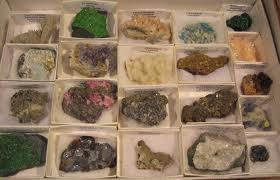

More and more large energy corporations are starting to take notice of the large potential of Greenland minerals. Currently, there are numerous exploration projects underway that are aimed at identifying the most valuable deposits of rare elements. The most successful Greenland minerals deposits discovered up to this point have been found to contain large quantities of various rare elements such as the highly sought after uranium, sodium fluoride, and numerous others. As Greenland energy supplies have become a top interest for this country, new development plans are created that have the aim of creating a Greenland energy plan that will, together with the mineral mining industry, be at the base of the country's future economy.
Considered to be a fully stable geopolitical region, the country is planning to increase the development of its vast mineral resources and energy capabilities that have long been underexplored. The special geography of this country provides a great opportunity for Greenland minerals mining companies because the most valuable deposits are uncovered by ice and actually provide transects over a high variety of geological deposits. This country has always been perceived as being very remote and an unsuitable destination for many projects related to tourism and other fields. Many government agencies have successfully created a very high awareness for all potential investors interested in investing in this country. Any downsides regarding logistics are greatly outweighed by this country's immense potential.
Another great advantage that companies active in this sector is the actual location of this country. Its strategic placement leads experts to believing that it will soon become the number one source for the large North American market and the European markets. In order to further add to the potential of Greenland minerals and come to the aid of large scale mining operations, governmental agencies are currently developing plans to increase Greenland energy potential through the expanding of the hydroelectric capacity. Greenland minerals resources are considered to be some of few remaining natural resource hot spots at a global level. The country's economy is known to always have been dependant on fish exports. Tourism also plays an important role, but since it is only viable during short time periods each year and because of the high travel costs it is quite limited.











